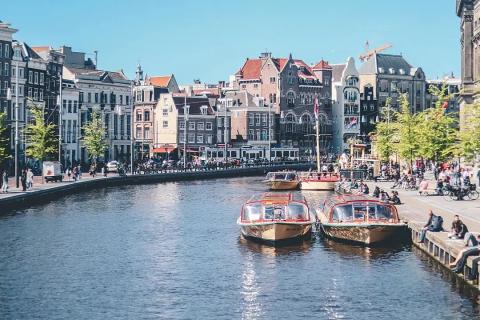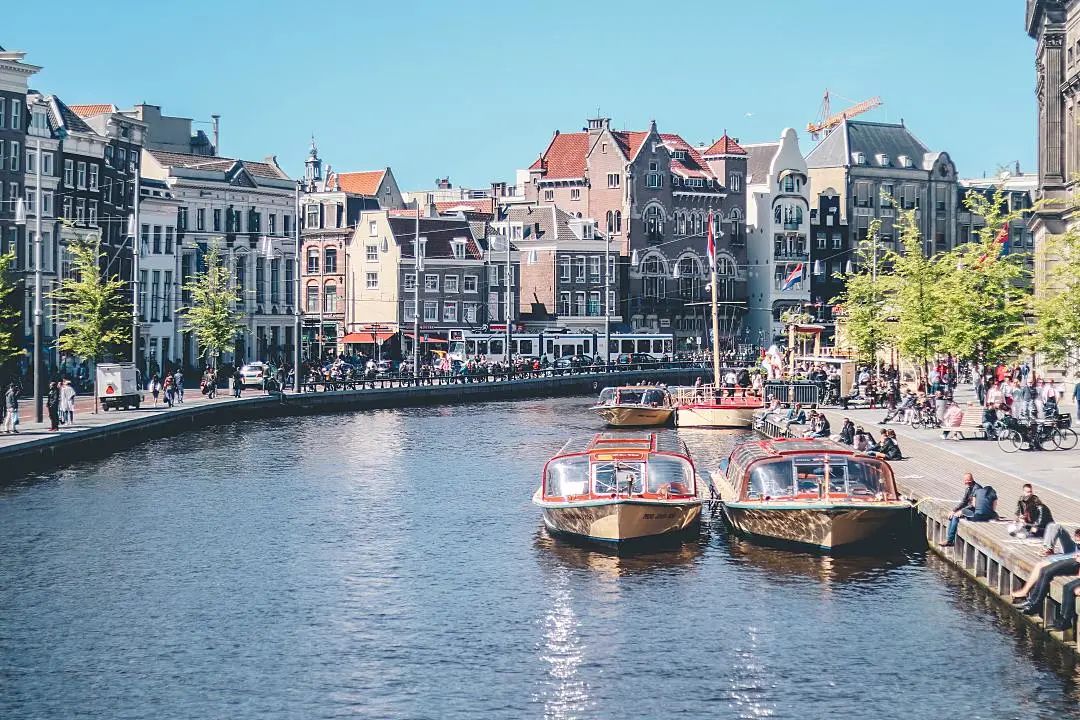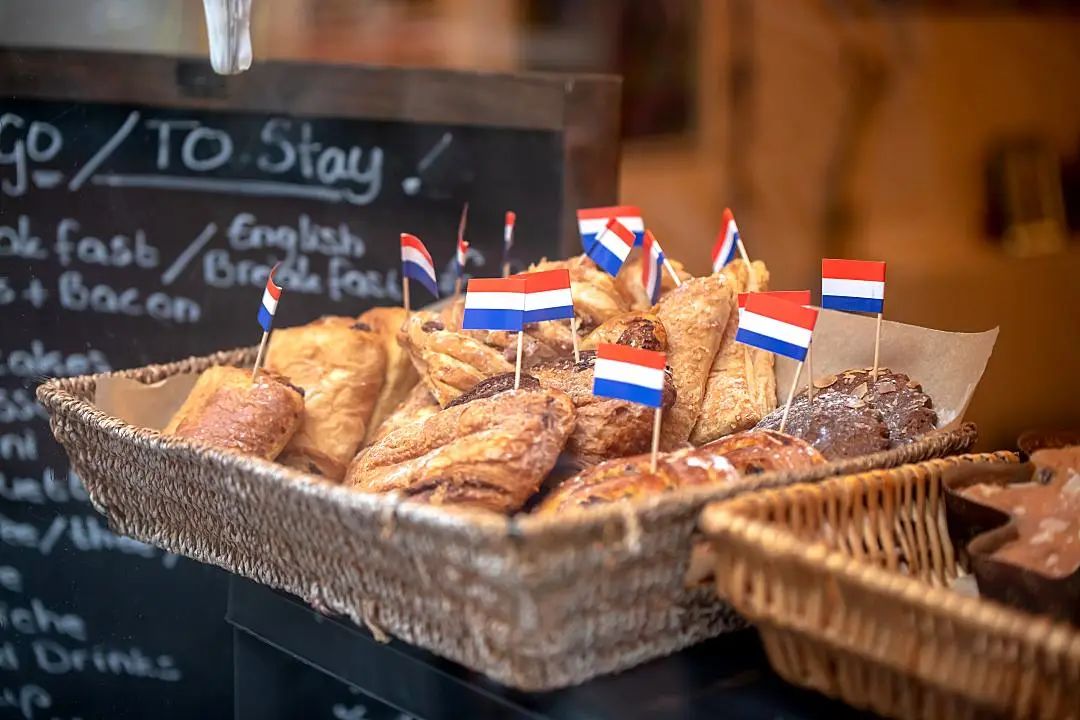

/
·Netherlands·
Netherlands
I don’t know if I don’t see it
Netherlands
If you don’t know yet, the Netherlands has officially changed its name to The Kingdom of the Netherlands since January 1, 2020.
Hahaha, I lied to you.
The Netherlands is still the same Netherlands, it just unified its official name and national logo .
Unlike many European countries, the Netherlands, located in the southern part of the North Sea, is friendly and easy-going. But when talking about the Netherlands, most people probably think of: windmills, tulips, wooden shoes, reclamation and red light district . Of course, there are also the post-Impressionist master Van Gogh who failed in his life and the realist master Rembrandt who became famous at a young age.
In fact, no matter which aspect arouses your interest, the Netherlands can leave you with memories that will last a lifetime.
(What, Amsterdam is “everything”?)


· · ·
Keywords: consumer guide

As an economic powerhouse in Western Europe, the Netherlands’ consumption is not cheap, and it belongs to the upper-middle level in Europe. Daily consumption and travel expenses are not cheap. In fact, you can ride a bicycle for urban transportation, or even walk in most places.
The currency in circulation in the Netherlands is the Euro (Euro), with the currency code EUR. The denominations of the banknotes are 500, 200, 100, 50, 20, 10, and 5. Coins are 2, 1, 50 cents, 20 cents, 10 cents, 5 cents, 2 cents, 1 cent.
average daily consumption price
Coffee – 2 euros (Regular Cappuccino)
Bottled water – €1.50 (330ml small bottle)
Beer – 4 euros (don’t say you don’t know Heineken)
Lunch – 10 euros (hot dog + drink)
Dinner – 50 euros (appetizer+main course+dessert+wine)
Taxi – 40 euros (Schiphol International Airport to Amsterdam city center)
Big Mac set meal – 8 euros (cheap and full)
Travel budget per person
Economical – 80 Australian dollars per person per day (brunch, light restaurant, dinner, bicycle rental and free attractions)
Normal – 140 Australian dollars per person per day (breakfast, lunch and dinner in a regular restaurant, public transportation and Amsterdam Card fees)
Deluxe – AUD 200 per person per day (breakfast, lunch and dinner in ordinary restaurant, taxi fare and Amsterdam Card + Tulip Card fee)
Voltage and power sockets
The voltage in the Netherlands is 230V/50Hz. Most new chargers basically have a wide voltage range and can be used directly. For slightly older small appliances, please check the corresponding voltage in the manual in advance and consider whether you need to bring a transformer.
The power socket is as shown in the picture, German standard Type C/F socket. Non-German standard chargers need to purchase a converter in advance.




Disclaimer: The above information is for reference only. Sydney Currency Services summarizes the "average daily consumption price" information through the Internet and has been committed to ensuring the authenticity and accuracy of the information. Specific prices, services and specific information may change and cause deviations. "Travel budget per person" is an estimate and does not include air tickets and accommodation costs. Actual expenditures may vary depending on the consumption location, time, and specific content. Sydney Currency Services does not assume any responsibility or loss arising from the discrepancy between the above information and the actual situation.
Please bring euros with you
· · ·

Although the Netherlands is a developed country in Western Europe,
Even though many stores in the Netherlands have upgraded to 100% electronic payment,
Even though there are many local ATM machines in the Netherlands.
Friends who are going to the Netherlands must also prepare euro cash with them in advance.
The reason is because there are many local restaurants, coffee shops and credit card machines in stores.
Only Maestro debit cards issued by Dutch banks are accepted.
Of course, large shopping malls still accept credit cards.
The local acceptance of VISA cards is higher than MasterCard.
Preparing as much cash as possible will also help yousave those ATM international withdrawal fees, right?

/
Another place in the Netherlands where you need cash, especially coins, is the toilets.
Because Dutch public toilets - charge .
When traveling in the Netherlands, you may find many free open-air men's urinals in the streets and alleys.
Yes, you read that right, "open air", "men's", "urinal".
In this regard, it can be completely seen that when the Dutch face and solve problems, they
The side of spontaneity and simplicity - instead of always cleaning a corner, why not just build an open toilet that can be covered?
But for "Second" needs and ladies, the Dutch have shown a shrewd side. Toilet toilets are a necessity and you have to pay for them. If you want to use a closed cubicle with a toilet, you will have to pay between €0.50 and €1 per trip.
Don't get angry about feminism. This is not sex discrimination, but gender protection.
There are more than 50,000 transgender people in the Netherlands, so closed stall toilets are the best way to serve them. In particular, it should be pointed out that the Netherlands has been vigorously promoting the benefits of toilets, calling on men and women, regardless of gender, to use toilets to solve problems as an effective way to prevent and delay prostate disease.
Okay, that’s it for now, this shouldn’t be a tasteful article.
Just remember to exchange cash in euros at a Sydney Currency Services store before departure.
Please rent a bicycle
· · ·

The Netherlands is a world-famous bicycle country. The capital city of Amsterdam is flat and compact, and the city center has a checkerboard layout. Almost 40% of people's transportation relies on bicycles.
However, if you naively think that Dutch bicycles are cheap, you are totally wrong.
The most common bicycles are more than 100 euros, and the slightly better ones are almost 400 euros (to be honest, it seems that Australian bicycles are not cheap).
However, the considerate and easy-going Dutch have already put themselves in their shoes and figured out a way to help you - rent a bicycle.

It stands to reason that even if a bicycle is expensive, you can use it for a long time if you buy one. Why do the Dutch tend to rent bicycles?
This has to be said that the Netherlands is also a big country that "loses" bicycles. The root cause is probably that bicycles are expensive and the demand for second-hand bicycles is staggering. The truth is, as long as your bike is unlocked, you can basically wait a few hours to "run into your ex" on a second-hand website.
It is said that when reporting a missing bicycle in the Netherlands, the police will first ask: How many locks have you put on?
Therefore, as a tourist, just rent a bicycle and experience life. The local bicycle rental business and shared bicycle services are booming in the Netherlands. Friends can choose different companies according to the length of rental time.
But there are two things you must know in advance:
First, Dutch bicycles are large and heavy, and most of them use a foot brake system (that is, pedaling backwards brakes). The first time you ride it, you need a certain amount of adaptation.
Second, if you ride at night, you need to turn on the lights on the front and rear of the car, otherwise you will be fined by the police.
One final word: If you have the chance, go to Eindhoven. On the way from Eindhoven to Nuenen, experience the world's first nightlight bicycle path - "Van Gogh's Trail" .

· · ·
Please buy a city card
· · ·

(Knock on the blackboard! Now is the ‘dry stuff’, please stay alert)
Traveling to the Netherlands is not cheap, especially the cost of attractions and museums.
As a tourist, you must know how to get around the Netherlands - that is to buy a card :
Amsterdam City Card (I Amsterdam City Card) and Tulip Card (Holland Pass).

amsterdam card
Almost most people’s first stop when traveling to the Netherlands is Amsterdam, so we’ll introduce this first.
The Amsterdam City Card is the most "official" travel pass.
This card can be purchased with different validity periods of 24 hours, 48 hours, 72 hours, 96 hours and 120 hours. Friends can choose according to the length of stay of each person.
Within the validity period, cardholders can visit free60 museums in Amsterdam; free take all public transportation of the GVB company ( light rail, bus and subway); and free of the famous canal cruise.
In addition, the city guide that comes with the card also lists many restaurants and cafes. Cardholders can enjoy discounts of up to 25% when spending at these places.
Since it is impossible to just skim through the museum, a 48-hour card or a 72-hour card is more cost-effective. At least you can visit a few more places and enjoy discounts at a few more restaurants and cafes. Right?
In addition, this card can also be used to enjoy discounts when renting city transportation.
Amsterdam City Card official website: www.iamsterdam.com

tulip card
The Tulip Card is a relatively affordable option for tourists. According to everyone's travel plan, you can purchase Small Tulip Card (including 1 gold card + 2 silver cards), Medium Tulip Card (2 gold cards + 2 silver cards) card) and Big Tulip Card (3 gold cards + 3 silver cards). Use gold or silver cards as ticket vouchers according to different attractions.
For example: Each person needs a gold card to visit the Rijksmuseum in Amsterdam, and each person needs a silver card to visit the Van Gogh Museum.
Tulip Card official website: www.hollandpass.com

museum card
In fact, the Netherlands also has a "former" magic card - the Museum Card (Museumkaart). Card holders can enjoy unlimited access to more than 400 museums across the Netherlands and are valid for one year.
However, since the policy was tightened in 2016, annual museum passes are only issued to local residents or EU residents, and overseas tourists can only purchase temporary cards at attractions after arriving in the Netherlands. The validity period is shortened from 1 year to 31 days, and you can only visit a maximum of 5 museums. Of course, friends can also compare, maybe this card is still a good choice.
Official website for the Museum Card (in Dutch): www.museumkaart.nl
· · ·
The last thing to point out is that in terms of public transportation: the Amsterdam City Card and the Tulip Card include free transportation or discounted tickets, but the Museum Card only covers museum tickets, so...
/


